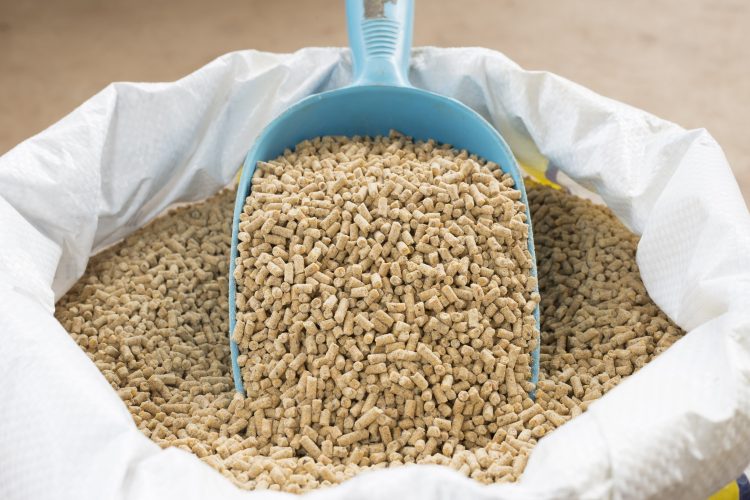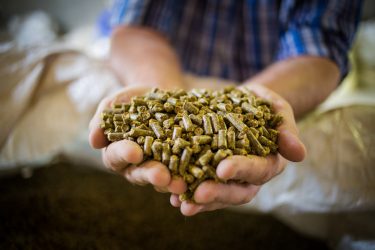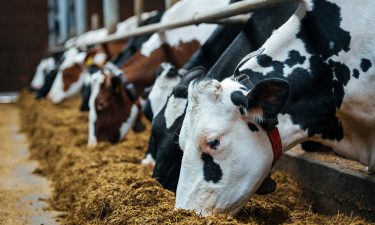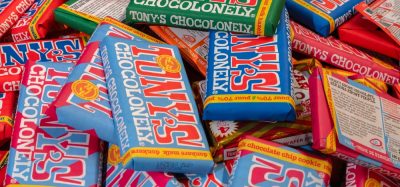Evolving trends of labels in animal feed additives
- Like
- Digg
- Del
- Tumblr
- VKontakte
- Buffer
- Love This
- Odnoklassniki
- Meneame
- Blogger
- Amazon
- Yahoo Mail
- Gmail
- AOL
- Newsvine
- HackerNews
- Evernote
- MySpace
- Mail.ru
- Viadeo
- Line
- Comments
- Yummly
- SMS
- Viber
- Telegram
- Subscribe
- Skype
- Facebook Messenger
- Kakao
- LiveJournal
- Yammer
- Edgar
- Fintel
- Mix
- Instapaper
- Copy Link
Posted: 6 May 2022 | Aditi Basu | No comments yet
Aditi Basu, Chief Marketing Officer at Future Market Insights, shares on the evolving trends of labels in animal feed additives


More than 85 percent of people around the world eat meat. Partly due to our increasingly fast-paced lifestyles, dependency on packaged meat foods has escalated. To create a transparent means of communication for consumers, label manufacturers are integrating technology and applying sustainable solutions that detail the lifecycles of meat and dairy products. This enables manufacturers to integrate the technology and provide information regarding the carbon footprint of the meat used on the labels.
According to Future Market Insights (FMI), the animal-feed additive market is expected to register a compound annual growth rate (CAGR) of 2.70 percent by the end of 2031. This is owing to growing consumer consciousness regarding the excessive use of antibiotics in animal-feed additives. The COVID-19 pandemic has played a key role in shaping the importance of labels on meat-food packages. Consumers have shown a keen interest in understanding not only the nutritional quotient of the food but also the impact the labels have on the environment.
Consequently, label waste has become a matter of concern for manufacturers who are increasingly focusing on using eco-friendly labels along with sustainable packaging. As most labels are made of liner and adhesives, the waste created by the same has become enormous.
Given that food temperature can hamper the quality of the label attached to its packaging, manufacturers are innovating and testing labels that are both tamper-proof and align with the various requirements of consumers. Herewith, we discuss the changing landscape of animal-feed labelling standards.
New-age labels are sustainable
Sustainability practices have become important across food industries. Various stages of food production are being redesigned and altered to reduce the overall carbon footprint of the meat manufacturing industry. This has led to manufacturers integrating ecolabels that are easily disposable and do not harm the environment. Food labelling manufacturers are using linerless labels as they are not only cost-effective but eco-friendly too. In addition, label manufacturers are focusing on offering specific labels that denote the carbon footprint of the meat product. This is helping consumers to choose meat products with a smaller carbon footprint.


Sustainability practices have become important across food industries, including the animal feed industry.
In March 2022, Avery Dennison acquired linerless label technology developed by Catchpoint Ltd. The company is integrating linerless labels on animal-feed additive packages, enabling cost-saving solutions. Through this acquisition, Avery Dennison is planning to fulfil its sustainability goal of advancing the circular economy and reducing the environmental impact of food packaging in operations and technology. Using linerless labels not only affords better insights into products but also reduces overall liner waste.
In early 2021, Amcor announced that the “Reducing-CO2 Packaging Label” from the Carbon Trust can be printed on Amcor packaging to demonstrate carbon footprint reductions of the packaging material. Brands can exhibit their packaging solutions’ carbon footprint from raw materials through to end-of-use. The first Amcor customer pilot for this labelling service has been completed in Europe and its rollout will accelerate in other regions in the coming months.
Blockchain – gaining trust through transparency
Animal feedstock contamination has become a matter of concern. The food consumed by animals and the environment it grows in can affect human health. To strengthen the nutritional content of animals, the use of antibiotics has become a common practice in the livestock industry. The adverse effects of these artificial ingredients on the human gut have increased consciousness regarding meat consumption among consumers. This has led to consumers demanding transparency at every stage of meat production. Thus, livestock industries are integrating blockchain technology to provide information regarding the feed ingredients and the lifecycle of the animal.
For instance, Neogen has partnered with Ripe Technology to improve the connection between livestock genomics, feed use and food safety. The company uses blockchain technology on labels for providing support and value-added claims on production labels. Blockchain integrated into labels will help meat producers to understand the safety quotient of the feed ingredient before they are manufactured into meat products. The label will convey the entire lifecycle of the meat from birth to slaughterhouse and whether it has received antibiotics. This will provide meat food manufacturers with information regarding the nutritional quality of the animal feed.
Clean labels that provide deeper insight
Understanding the geographical origin of food is no longer sufficient, especially for the dairy and meat industries. Meat and dairy food manufacturers, along with consumers, are demanding a greater level of insight into the lifecycle of animals. This, in turn, has paved the way for innovation in labels that create transparency between the livestock industry, meat food manufacturers and consumers.


Meat and dairy food manufacturers, along with consumers, are demanding a greater level of insight into the lifecycle of animals.
The integration of blockchain technology in labels has enabled transparency, making it easier to trace the origin and lifecycle of livestock. This, in turn, is gaining the trust of meat manufacturers and consumers alike. Blockchain technology is providing a direct insight into the additives used in animal feed, enabling meat manufacturers to make better, more informed decisions about the animal meat they use, and rejecting meat from animals reared using antibiotics or artificial ingredients. In the coming years, the integration of the Internet of Things (IoT) along with artificial intelligence will change the landscape of labels and the way labels provide information.
Growing carbon emissions pose an enormous threat to the environment, of which the livestock and meat industries are major contributors. Thus, these industries are taking initiatives to combat the issue of carbon emissions from grassroots to manufacturing levels. Meat food manufacturers are printing labels that indicate the carbon footprint of the food product, in turn helping consumers to make better decisions about the meat products they buy.
Looking ahead, labels have the potential to revolutionise the meat industry, enhancing overall interconnectivity and bringing the livestock and meat manufacturing industries closer. Not only will labels help in achieving sustainability goals but they will also aid better and faster decision-making. This, in turn, will create transparency and gain trust among manufacturers of livestock and meat.
About the author


Related topics
Environment, Food Safety, Ingredients, Labelling, Packaging & Labelling, Supply chain
Related organisations
Amcor, Avery Dennison, Carbon Trust, Catchpoint Ltd, Future Market Insights, Neogen, Ripe Technology









